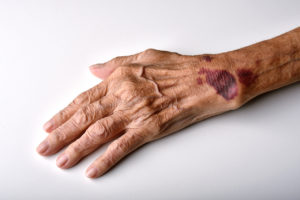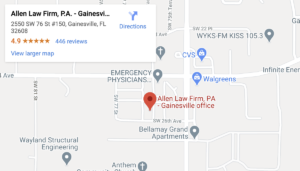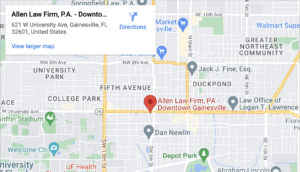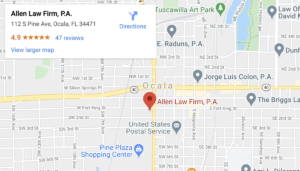
Soft tissue includes the structural material in the musculoskeletal system that has not been calcified. In other words, it includes everything that gives your body structure, with the exception of your bones.
Accidents frequently result in soft tissue injuries. From bruised muscles to torn cartilage, the forces involved in accidents can cause a wide range of soft tissue injuries.
Want to learn more about soft tissue injuries and the compensation you can seek for them after an accident? Take a look at our guide to soft tissue injuries below.
How Does a Soft Tissue Injury Happen?
The musculoskeletal system includes many types of soft tissue, such as:
- Muscles and tendons
- Ligaments
- Cartilage
- Fascia
- Synovial membranes
These tissues give your body stability. They also provide the strength that you need to move your body. For this reason, when you suffer a soft tissue injury, your ability to engage in work and recreational activities can be significantly diminished.
Soft tissue injuries can happen in two primary ways:
Trauma
Your body may experience a force that overcomes the material properties of the soft tissue. This can stretch or rupture the soft tissue.
Repetitive Stress
Stress can cause small tears in the soft tissue. Normally, the body repairs these tears after a period of rest. However, repetitive motions can cause these tears to grow faster than the body can repair them.
What Are Some Examples of a Soft Tissue Injury?
Soft tissue injuries can range from minor bruises to permanent joint damage. Some of the most common soft tissue injuries include:
Bruises
Bruises, also known as contusions, happen when blood vessels in the soft tissue rupture. The resulting internal bleeding causes discoloration you can see through the skin.
Bruises usually heal on their own with rest. However, you should have a doctor examine severe bruises, especially after an accident; the bruises might indicate other problems like a fractured bone or torn ligaments.
Strains and Sprains
Muscles move your body and give you strength. Tendons connect your muscles to your bones. Strains happen when the muscles and tendons stretch or tear.
Symptoms of a strain include:
- Pain
- Inflammation
- Weakness
- Muscle spasms
A mild strain might be able to heal with rest, ice, elevation, and anti-inflammatory drugs. A severe strain might require immobilization with a brace.
Doctors rarely use surgery to address torn muscles or tendons unless the tear has caused the muscle or tendon to move out of place.
Ligaments connect bones. Ligaments give your skeleton structure and flexibility. Sprains happen when a ligament stretches or tears.
Some of the most common symptoms of sprains include:
- Popping sounds or sensations at the time of the injury
- Pain
- Inflammation
- Bruising
- Joint instability
You can recover from mild sprains with rest, ice, elevation, and anti-inflammatory medication. A doctor will often immobilize a torn ligament. They may even operate to reattach it.
After the injury begins to heal, doctors often prescribe physical therapy for strains and sprains. Physical therapy can build up the surrounding muscles to support the injured area while it heals.
Torn Cartilage
Cartilage sits between the bones in a joint. Cartilage provides a smooth surface so the bones do not wear down as they move against each other. Cartilage also cushions the joints from the impacts of walking, running, jumping, pushing, carrying, lifting, and other physical activities.
When cartilage tears, the torn pieces of cartilage can get jammed in the joint. The torn cartilage can allow the bones to grind against each other, leading to arthritis.
Some of the most common symptoms of a cartilage tear include:
- Pain
- Swelling
- Stiffness
- Grinding sensation
- Locking of the joint
Cartilage heals very slowly on its own. In the meantime, you might lose the ability to use the joint with the torn cartilage. Doctors can treat torn cartilage by removing or replacing the cartilage.
Torn Fascia
Fascia surrounds muscles to hold the fibers together. The same types of injuries that tear muscles and tendons can also tear the fascia. Repetitive stress and overuse can cause the fascia to tear, as well.
When the fascia tears, the muscles can swell. The swelling compresses nearby nerves causing intense pain.
Symptoms of a torn fascia include:
- Pain
- Inflammation
- Limited range of motion
Torn fascia can heal with home treatment, including rest and ice. In severe cases, doctors may immobilize the affected area with a brace.
What Are the Risk Factors for a Soft Tissue Injury?
A soft tissue injury can result from any type of accident. Some accidents that pose a high risk of a soft tissue injury include:
Pedestrian and Bicycle Accidents
Pedestrian accidents involve a lot of force. Cars weigh several times more than a human body. Even a low-speed collision can tear muscles, tendons, ligaments, and cartilage in the accident victim’s body.
Bicycle accidents also transfer energy from a heavy, fast vehicle into the cyclist’s unprotected body. Although a helmet can protect you from a traumatic brain injury, it does not protect your body from strains, sprains, and other kinds of soft tissue injuries.
Car Accidents
Car accidents frequently cause soft tissue injuries. The impact of the seat belt on your chest can cause bruises or even torn muscles. Side impacts frequently cause knee and shoulder injuries, including torn cartilage, muscles, tendons, and ligaments.
You can also suffer facial injuries if your face strikes the airbag, steering wheel, or dashboard. The impact can bruise your face and break the cartilage in your nose.
Work Injuries
Workplaces can cause soft tissue injuries in two ways. Workplace accidents involving falling objects, moving vehicles, or running machinery can tear soft tissue. Repetitive motions like typing, lifting, carrying, walking, and standing can also cause small tears in the soft tissue to appear.
Can You Seek Compensation for a Soft Tissue Injury?
Compensation after an injury caused by someone else’s negligence should address your economic and non-economic losses. Economic losses include medical expenses and lost income.
For minor injuries, you might have few economic losses. But severe soft tissue injuries, like a ruptured ligament or torn cartilage, can permanently disable you. These types of injuries can require ongoing physical therapy and medication and may force you to change jobs.
Non-economic losses include your pain and suffering. Although minor soft tissue injuries cause severe pain, they heal in a few months. But severe soft tissue injuries can lead to ongoing pain and suffering when they cause chronic conditions like arthritis.
Contact an Ocala Personal Injury Lawyer for Help
To discuss the compensation you might recover for your soft tissue injury, contact Allen Law Accident & Injury Lawyers to schedule a free consultation. We’ll explore the details that led to your injury and help you to understand your next best steps to pursue compensation. Our Ocala personal injury lawyers are here to help.




